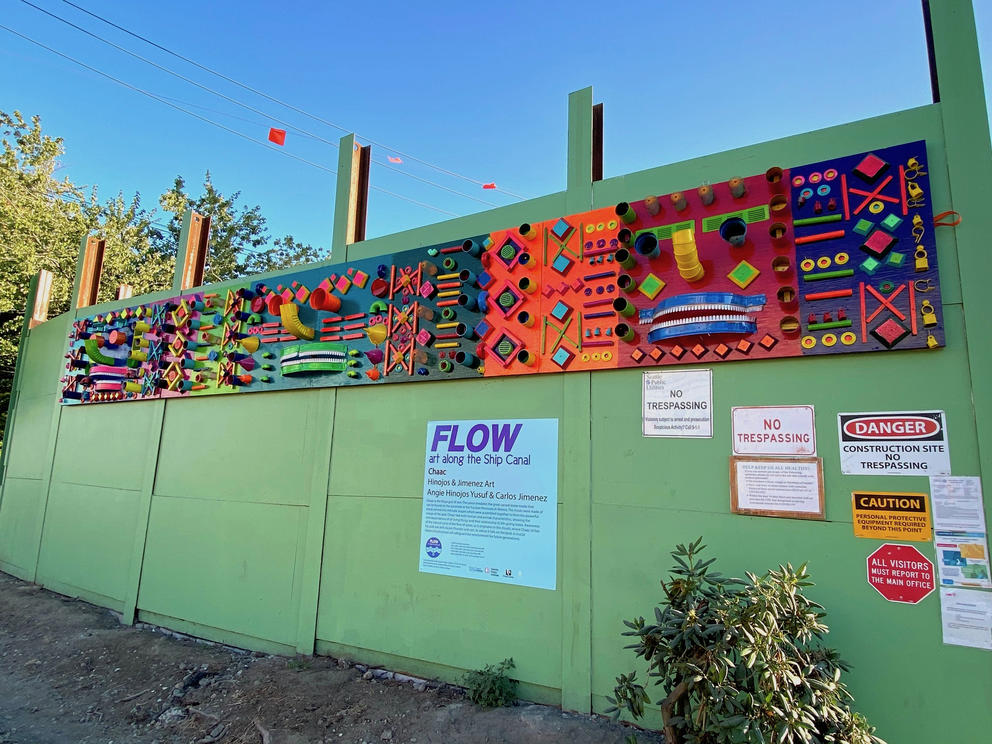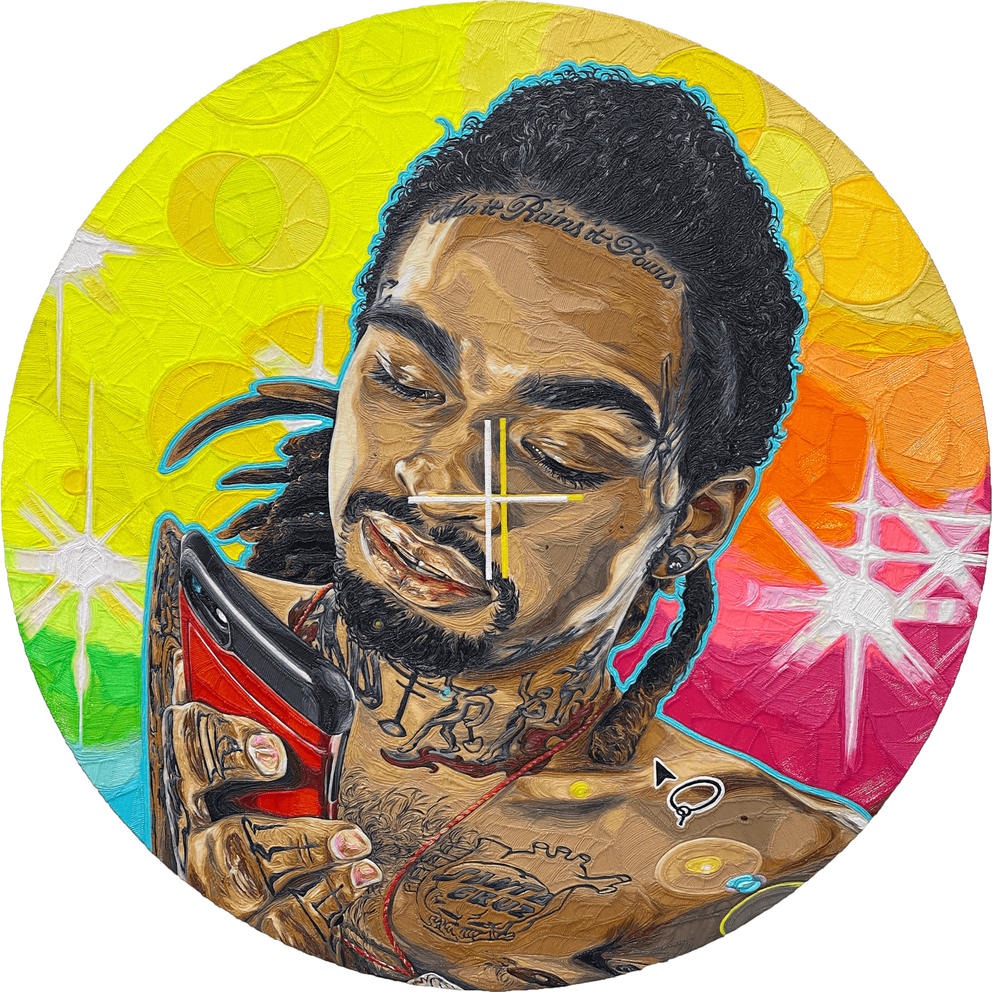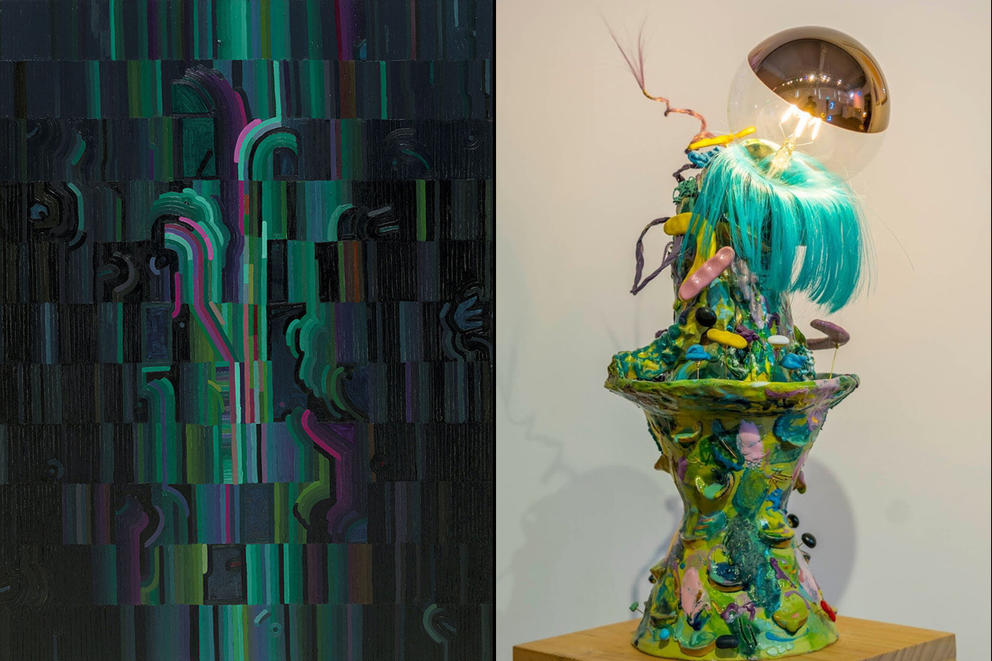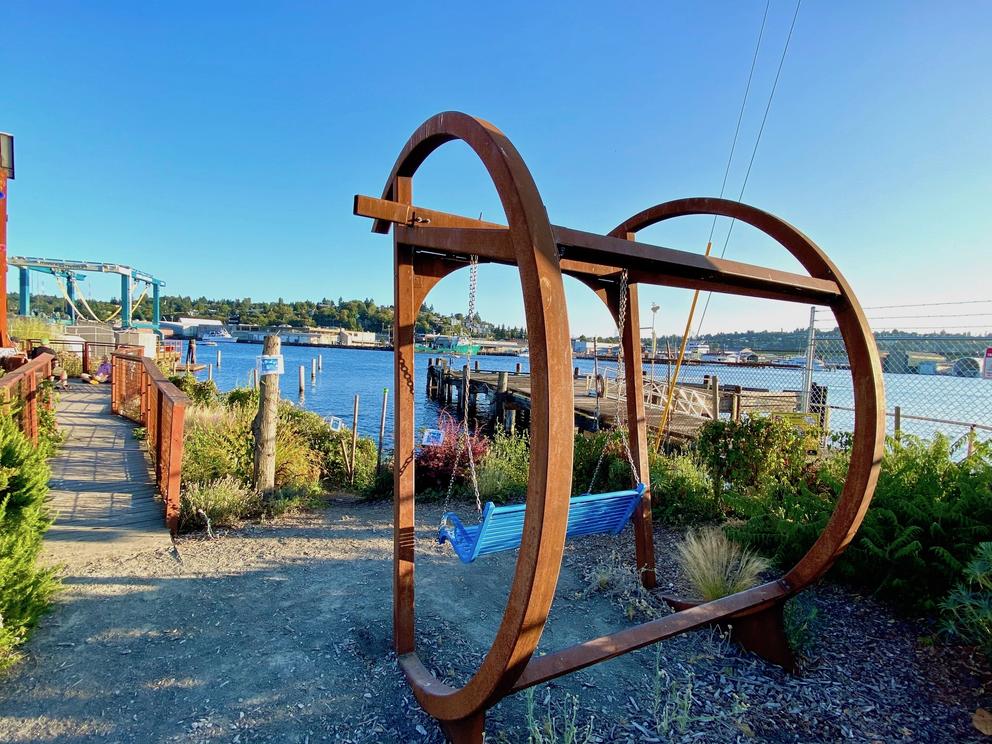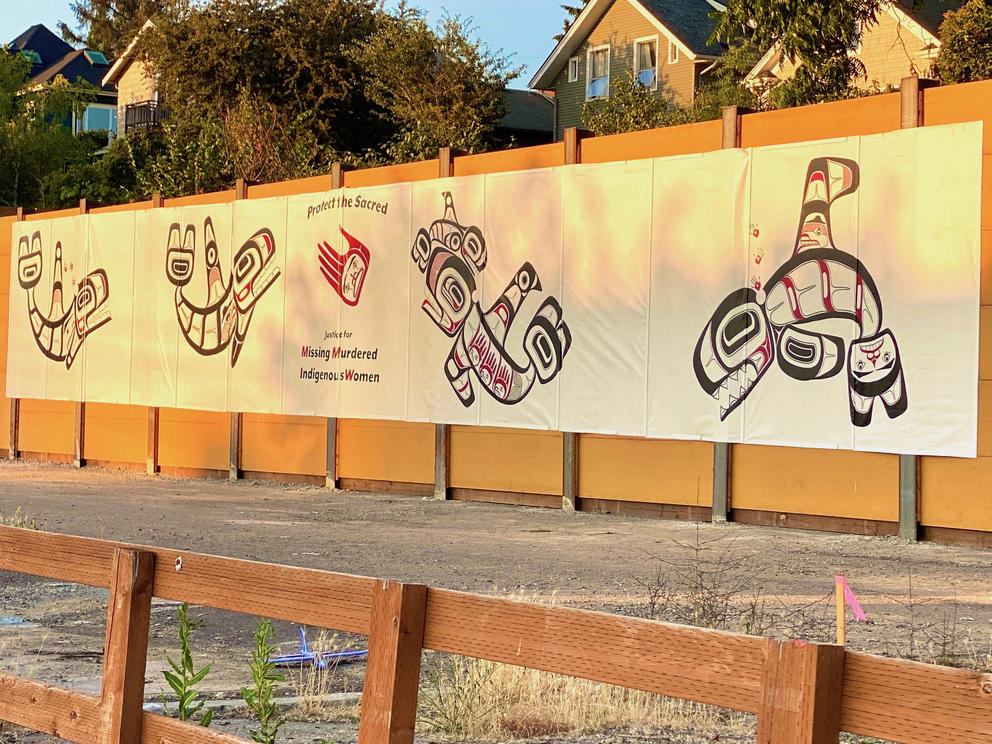It won’t have the gigantic boat-show arena vibe, the avant-garde live performances (a la Bread Face from last year) or the roving crowds decked out in their artiest garb. But it does allow local galleries that couldn’t afford the SAF booth fees to participate. And there will be lots and lots of art — indoors.
I’ve become so accustomed to viewing art outdoors these last few months that it feels like a novel treat to step inside an exhibition. Event co-organizer Greg Kucera told me the galleries are equally as excited to have people inside them, evidenced by how “this idea hatched, germinated and grew into a full-fledged thing in a couple of days.”
“Deconstructed” means galleries are holding shows in their own spaces, in their own way. Kucera built a 12-foot-tall, X-shaped art fair wall inside his gallery. Studio e added a “Virtual Venetian” fantasy gallery online. Most galleries will have the shows up all month or longer (and selections are viewable online). Some have regular open hours, others are by appointment only, and all, of course, require masks and distancing.
I’m eager to see work by so many local artists, including an Anthony White pop-art portrait at Greg Kucera, Gala Bent’s black-hole inspired paintings at G. Gibson (housed as a pop-up inside Foster/White), a giant ceramic pigeon by George Rodriguez at Foster/White, Ko Kirk Yamahira’s unthreaded canvases at Studio e and Ling Chun’s strange and wondrous work using fake neon hair at Method.
Just as deconstructing a beloved arts event makes for a cool new adaptation, so too is a construction project sparking new opportunities for experiencing art. For this week’s field trip, I ventured out in search of a series of installations commissioned for FLOW: Art Along the Ship Canal. A joint effort of Seattle Office of Arts and Culture and Seattle Public Utilities, the initiative aims to enliven the construction walls and fences that will surround the Ship Canal Water Quality Project for the next five years or so, as the city works to reduce the flow of sewage and polluted stormwater into surrounding waterways.
On a warm and sunny summer evening, I started at the west-most installation, in Ballard at 24th Avenue Northwest and Shilshole Avenue Northwest (on the green construction wall across from the graffiti-covered façade of Magnum Self-Storage). “Chaac,” named after the Maya god of rain, is the creation of Angie Hinojos Yusuf and Carlos Jimenez. The local artists and curators collaged bits of rain gutters, pipes and vents to evoke indigenous carved-stone masks found in the Yucatan Peninsula, as well as the relationship of water to all living things. The folk-art-industrial feel of the piece suits the neighboring hive of activity happening in the name of improving our water: tall cranes, full dumpsters and something clanking determinedly.
Next up, I traveled east along the canal, excitedly looking for “Crossing,” a new work by Seattle cut-paper master Katie Miller, located near the Fred Meyer in Frelard (at Northwest 45th Street and 11th Avenue Northwest). Perhaps I was a little too excited — I didn’t realize it wasn’t being installed until this coming weekend. But no matter! In searching for it I discovered a fantastic pocket park that I’d never seen. Where 11th Avenue dead-ends at the water, an industrial bench swing offers killer views of the ship canal activity, and artful touches (ceramic tiles, bead-shaped wooden sculptures) make it feel like a secret treasure. I’ll return to see Miller’s work, and take in the waterway again.
Thrilled by finding a new waterside nook in a city I’ve lived in for 27 years, I moved on to the next FLOW installation — and, once again, proved a bit too early to the party. The name alone had me intrigued: “TATTARRATTAT,” by local installation artist Minh Carrico, whose previous work has included coded messages for intergalactic space travelers. The palindromic piece (tentatively scheduled to begin installation Aug. 17 at Northwest 36th Street and Leary Way Northwest in Fremont), will spell out the onomatopoetic title using the International Code of Signals for water vessels.
In searching for it, I found another cool thing I’d never before encountered: a permanent art installation at the Fremont Siphon (aka odor control facility for waste water). Local artist Perri Lynch Howard created “Streamline” to illustrate the variable flow of wastewater, turning our seasonal usage patterns into a dreamy painting in blue, purple and indigo.
By this point I was thoroughly enjoying my serendipitous encounters, which also included watching a socially distanced partner-dance class in a Fremont parking lot. But I was happy to find that the last artwork on my route has been fully installed. “MMIW,” by Kalee Nelson (Tsimshian) and Crystal Christopherson (Tlingit), is a large-scale mural intended to raise awareness about missing and murdered Indigenous women. The striking piece is dominated by traditional formline drawings of killer whales whose blowholes spout red handprints (a symbol of the movement).
I finished the evening at one of my favorite old-school outdoor installations, Charles Greening’s interactive sundial installed atop Kite Hill at Gas Works Park. The fanciful yet functional bronze piece has been inviting visitors to play gnomon since 1978, and reminds us that, yes, time passes, and the world may seem turn upside down, but art persists.
Get the latest in local arts and culture
This weekly newsletter brings arts news and cultural events straight to your inbox.

